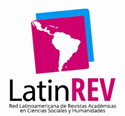Hacking Bodies.
A virtualization of the Human
DOI:
https://doi.org/10.21142/DES-1502-2023-0017Keywords:
Bodies, Cyborg, Posthumanism, Transhumanism, VirtualAbstract
In 1953, DNA molecule structure was found, and the enigma of life was deciphered as a set of information codes of biochemical data; thenceforth the human being has been represented as an input and output information system and, it has been set a discourse that place the cyborg as an image that emphasize the opposition between technology and the living organism. This thesis will develop the idea that virtualization of the human body —it means that the materiality of body becomes virtual when its biological and organic condition is taken to the universe of information codes— consequently it is treating as a living computer system. The phenomenon of body hacking will be explored as a post and transhuman movement, to wonder about the processes of daily interaction between human beings and computer entities.
Downloads
References
Arenas-Dolz, F. (2017). Dimensiones de la virtualidad. Diálogo Filosófico, 33(97), pp. 4-36.
Badou, J. (2003). La science-fiction. PUF.
Benderson, B. (2010). Transhumain. Éditions Payot & Rivages.
Bernard, F. de. (2015). L’Homme post.numérique. Yves Michel.
Biagini, C. (2012). L’emprise numérique. Comment Internet et les nouvelles technologies ont colonisé nos vies. Éditions L’échappée.
Braidotti, R. (2015). Lo posthumano. Gedisa.
Casilli, A. (2010). Les liaisons numériques. Vers une nouvelle sociabilité? Seuil.
Copeland, J. (1996). Inteligencia artificial. Una introducción filosófica. Alianza Editorial.
David, A. (1965). La cybernetique et l’humain. Gallimard.
Descartes, R. (2012). Meditaciones metafísicas. En Obras (pp. 153-220). Gredos.
Descartes, R. (2012). Tratado del hombre. En Obras (pp. 673-736). Gredos.
DIYbio.org. (2008). Sitio web. https://diybio.org/
Dreyfus, H. (1978). What computers can’t do: The limits of Artificial Intelligence. HarperCollins.
Dreyfus, H. (2009). On the Internet. Routledge.
Fiévet, C. (2012). Body Hacking. Pirater son corps et redéfinir l’humain. FYP Éditions.
Foucault, M. (1968). Las palabras y las cosas. Una arqueología de las ciencias humanas. Fondo de Cultura Económica.
Foucault, M. (1976). Vigilar y castigar: nacimiento de la prisión. Siglo XXI.
Foucault, M. (2001) Naissance de la biopolitique, 1979. En Michel Foucault. Dits et écrits II. 1976-1988 (pp. 818-820). Gallimard.
Gleyse, J. (1997). L’instrumentalisation du corps. Une archeologie de la rationalisation instrumentale du corps, de l’Âge classique à l’époque hypermoderne. L’Harmattan.
Hackerspace.org. (2006). Sitio web. https://hackerspaces.org/
Haraway, D. (1995). Ciencia, cyborgs y mujeres. La reinvención de la naturaleza. Ediciones Cátedra, Universitat de València, Instituto de la Mujer.
Hayles, K. (1999). How we became posthuman. Virtual Bodies in Cybernetics, Literature, and informatics. The University of Chicago Press.
Hayles, K. (2012) How we think: digital media and contemporary technogenesis. University of Chicago.
Hoquet, T. (2011). Cyborg Philosophie: Penser contre les dualisms. Seuil.
Lepht Anonym. (2011). Cybernetics for the masses (part 1). [Video de YouTube]. https://www.youtube.com/watch?v=PiR3WhtYl8g
Lepht Anonym. Sapiens Anonym. (2020). Blog. https://sapiensanonym.blogspot.com/
Lévy, P. (1998). ¿Qué es lo virtual? Paidós.
Mattelart, A. (2007) La globalisation de la surveillance. Aux origines de l'ordre sécuritaire. Éditions La Découverte.
Downloads
Published
Issue
Section
License

Esta obra está bajo una licencia http://creativecommons.org/licenses/by-nc-sa/4.0/



















